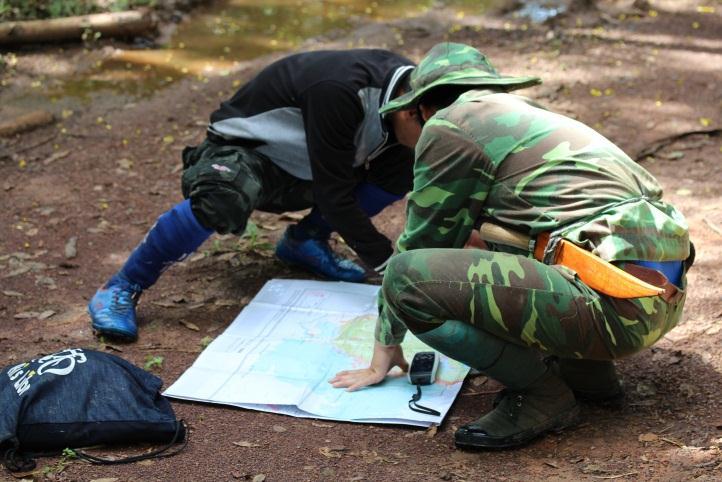Hoang Thanh Son
Dong Nai Biosphere Reserve was approved by UNESCO in 2001 and it plays a key role in terms of biodiversity values and conservation because of a very high biodiversity, with many typical ecosystems. The core aims of this project are to describe forest diversity in different zones suffered from dioxin in the biosphere reserves. Sampling design, activities and field trips of this project will be carried out in areas where forest has been heavily, intermediated and lightly destroyed or suffered from dioxin in the past, and then they will compare with relatively untouched forest areas (control samples). Finally, ecological and economic interests, new applied technologies and science-based policy for conservation and restoration efforts will be discussed among ecologists, foresters, and stakeholders.

Identification of site on map.
Dong Nai Biosphere Reserve encompasses provinces of Dong Nai, Lam Dong, Binh Duong, Binh Phuoc, and Dak Nong. The main objectives of the Dong Nai Biosphere Reserve are to care the value of biodiversity and cultural heritage of the Southeast Vietnam, to conserve its gene pool of rare, precious wildlife and plant species, to protect the landscape and to rehabilitate the forest. It also serves research purposes such as natural conservation and environmental education. Additionally, it offers potential opportunities for the development of eco-tourism, contributing to socioeconomic development, the enhancement of life quality of local people.
Four detailed research questions will be addressed in this project.
1. What is ecological data relating to current status of forest’s diversity in places where they were suffered from agent arrange?
2. How do species richness, structure and tree species composition of natural regeneration change over time in different disturbance of Agent Orange/dioxin?/ To investigate and compare the tree abundance and species richness of the natural regeneration in different disturbance of Agent Orange/dioxin.
3. How these data will be used for land-use planning, sustainable forest management and conservation work at locality in the future time?
4. What are solutions and plans made by national and local authorities in terms of sustainable forest management and biodiversity programs for forest areas suffered from Agent Orange/dioxin in the future?
Ending of the project, we expect that the final results will be used by:
At national level:
1. Taking forward these results of the research and give advises to Vietnam Administration of Forestry and Ministry of Agriculture and Rural Development to make the strategic direction of forest research and national land use management for the long term at sites.
2. Training young scientists in habitat restoration and in the conservation of ecosystems and flora.
At provincial level:
1. Land use management planning (annual programs and five year-plan)
2. Plans for converting forest areas heavily suffered from Agent Orange/dioxin in the past into plantation;
3. Helping minority groups living in areas to improve their living standards in order to reduce the pressure they now exert on forests and endangered species.